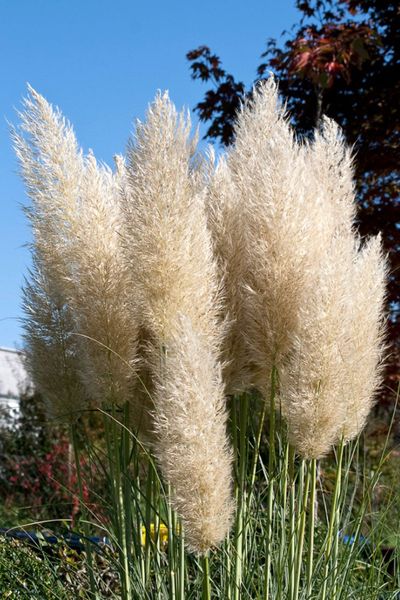Some tips on how to grow pampas grass in containers should answer your question.
Is Potted Pampas Grass Possible?
I ordered pampas grass babies to make a “living fence” a couple of years ago. They stayed in their containers until our recent move. While growth was limited due to the size of the containers, my pampas grasses were very happy being confined. From this experience, I feel growing pampas grass in a container is possible but should probably be done in large containers to allow for better growth. Container-grown pampas grass is completely possible; however, consider where you position the pot. That is because the plants get very large and have leaves with sharp, knife-like edges. Situating the container near entries is not wise, as anyone passing by could get cut by the leaves. If you want to grow the grass on a patio or lanai, place it at the outermost edge as a privacy screen but where it won’t interfere with traffic patterns. Now that we have determined the viability of pampas grass in a container, let’s select the right kind of container and soil.
How to Grow Pampas Grass in Containers
The first step is to get a big pot. You can gradually move young plants up to a larger container but, ultimately, you need something that will hold a big plant. A container that is at least ten gallons (38 L.) should be sufficient for potted pampas grass. That means a lot of soil too, which will make a very heavy plant. Choose a sunny location where the plant won’t get battered by the wind or winter-killed because moving that kind of weight is just silly. You could also place the pot on casters so you can easily move it as needed. Potting soil will work well for container-grown pampas grass but add a bit of sand or gritty material to it to increase absorbency.
Caring for Pampas Grass in Pots
Pampas is drought tolerant grass but, in a container, it will need regular water, especially in the summer. Usually, you don’t need to fertilize these grasses provided there is enough nitrogen in the soil. However, with ornamental grass in containers, the nutrients get used up and leach out, so feed the plant in early spring with a high nitrogen food. The plant’s leaves can get tattered or simply die back in winter. Prune back pampas leaves in late winter to early spring to tidy up the appearance and allow new leaves to come in. In a few years, you will want to re-pot the plant. At that time, divide it to maintain a smaller size.
